The 40 greatest synth sounds of all time, No 3: Donna Summer - I Feel Love
Can we recreate this seminal electronic bassline in six steps? Let's find out...
It is all but impossible to underestimate the impact of I Feel Love. Released in the summer of 1977, it was a seminal slab of electronic disco unlike anything that had come before it.
Famously, one of David Bowie’s sessions for the Low album was interrupted by a breathless Brian Eno who, having just heard I Feel Love, declared that it was “going to change the sound of music for the next 15 years."
He wasn’t wrong, but he was guessing a bit short of the mark, as echoes of I Feel Love have never faded, with musicians today still trying to recapture the magic of the original.
Ironically, the song’s longevity was something of a self-fulfilling prophecy. When producers Giorgio Moroder and Pete Bellotte began work on Summer’s fifth LP, they envisioned a concept album on which each song represented a specific decade, with the final cut being an attempt to create something futuristic. They couldn’t have known how right they were!
In order to create their prognostic platter, they chose to eschew the typical instrumentation of disco music - telegraph guitars, thick strings, electric bass, and horns - and bring in a massive Moog IIIP system belonging to classical musician Eberhard Schoener.
Luckily, Schoener’s assistant Robby Wedel accompanied the Moog to lend a hand with the immense technical requirements of the system. Most significantly, he showed the producers how it could be synchronised to tape in order to record multiple tracks in perfect rhythmic lock-step.
Wedel’s demonstration was a revelation, allowing Moroder and Bellotte to create a complete arrangement using little else but the Moog. The bass sequence, the snares, hi-hats - all were products of the modular synth.
Want all the hottest music and gear news, reviews, deals, features and more, direct to your inbox? Sign up here.
The results were a clean, open mix that allowed Summer the freedom to lay down an astonishingly evocative vocal performance.
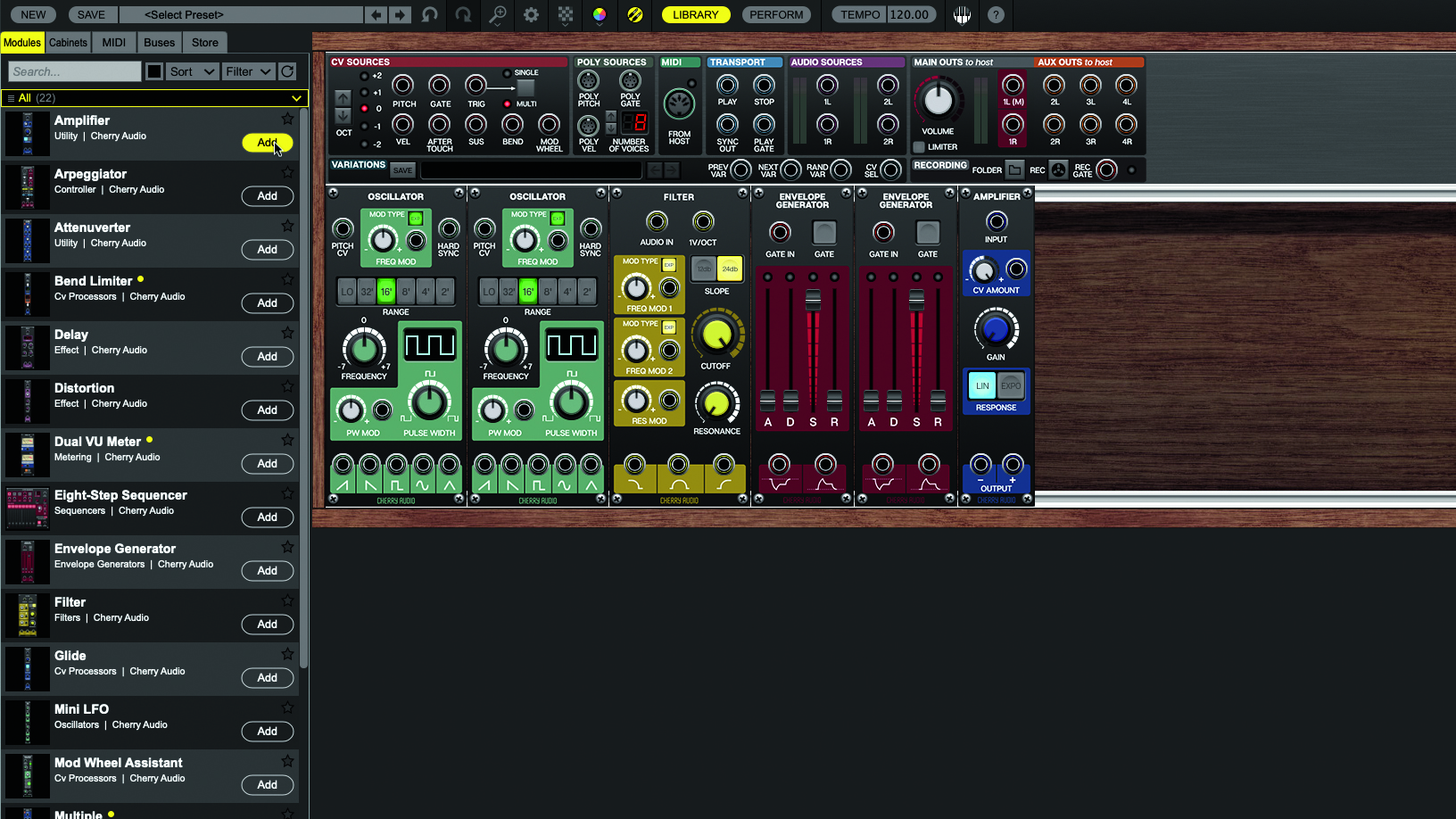
Step 1: Can we recreate the seminal bass sequence from I Feel Love in a mere six steps? Let’s find out! We’ll fire up Cherry Audio’s Voltage Modular Nucleus and click New in the upper-left to clear the rack. We’ll go to the Library and get two Oscillators and a Filter module. We’ll add two Envelope Generators, and an Amplifier, as well.
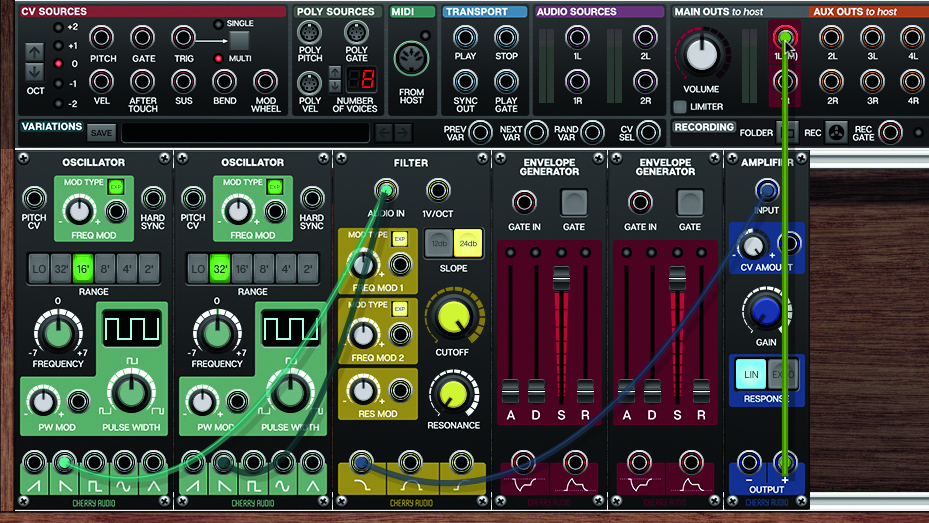
Step 2: Let’s get our basic patch started by routing each Oscillator’s Ramp Outputs (second from left) to the Filter’s Audio In. Set one of the Oscillator’s Range to 32’. Detune one Oscillator’s Freq to about -0.04, and the other to 0.04. Route the Filter’s Low Pass (bottom-left) to the Amplifier’s Input. Patch the Amplifier’s ‘+’ Output to the Main Out’s 1L(M) jack.
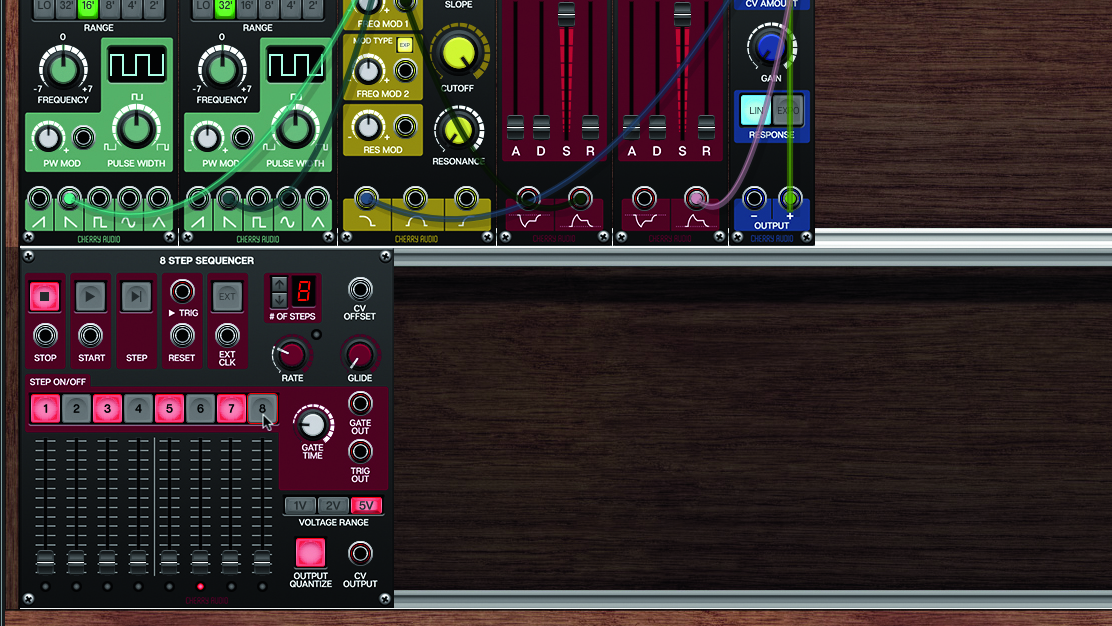
Step 3: Next, patch the rightmost Envelope Generator’s Positive Output (bottom-right) to the Amplifier’s CV Amount jack. Patch the rightmost Envelope’s Positive Output to the Filter’s Freq Mod 1 jack. Go to the Library and get an Eight-Step Sequencer module. Set its Rate to 125bpm. Use its Step On/Off buttons to deactivate steps 2, 4, 6, and 8.
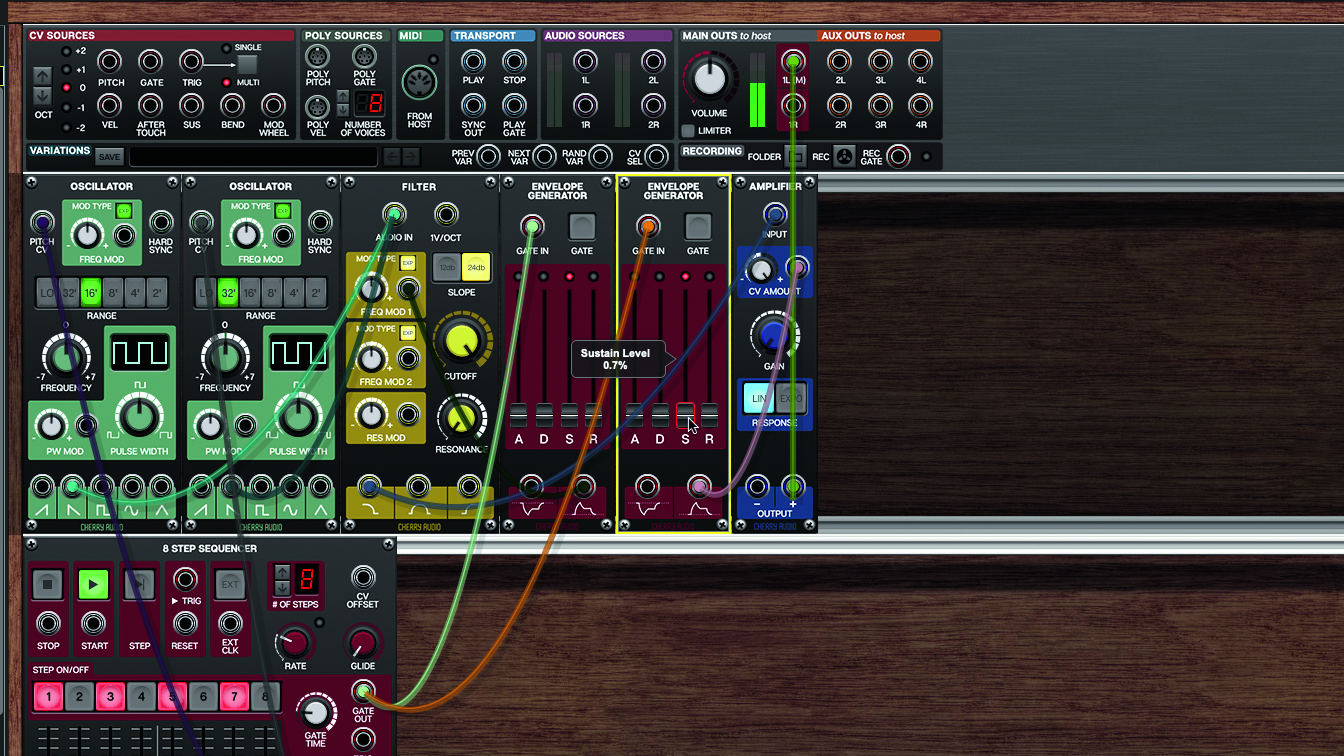
Step 4: Move the slider for step 5 to ‘F2’ and the slider for step 7 to ‘G2’. These aren’t the exact notes, but they are close enough, and avoid copyright entanglements. Patch the Sequencer’s CV Output to both Oscs’ Pitch CV jacks. Patch its Gate Out to both Envelopes’ Gate In. Press Start on the sequencer. Yuck. Set both Envs’ Sustain sliders to nil.
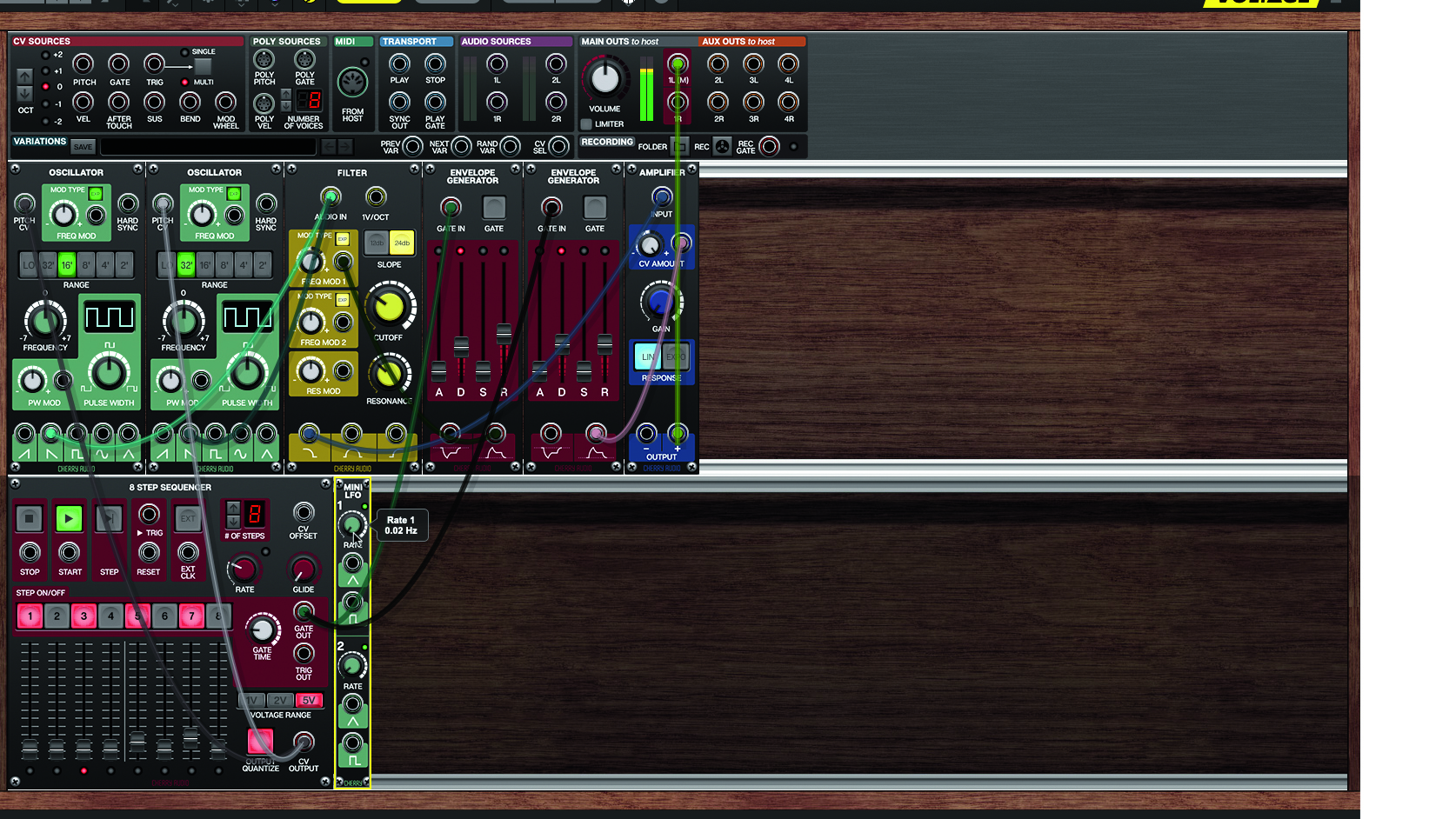
Step 5: Set the right Envelope’s Decay and Release to around 260ms. Set the Filter’s Cutoff to 600Hz or so, and its Resonance to about 33. Set its Freq Mod 1 knob to 65%. Now set the right Envelope’s Decay to around 192ms, and the Release to over 260ms. Bring in a Mini LFO and crank its top Rate fully down.
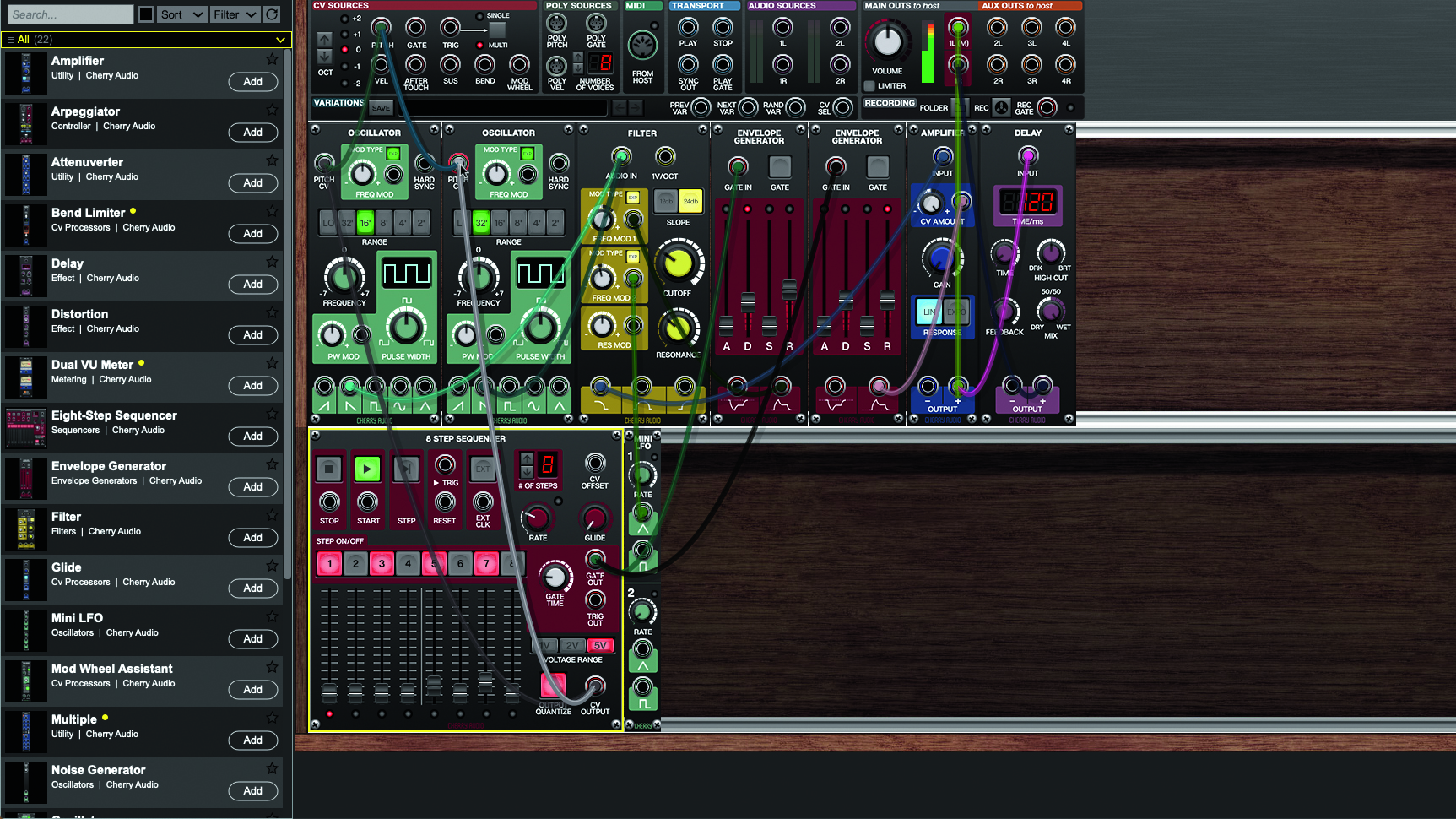
Step 6: Patch the LFO’s top Triangle Out to the FIlter’s Freq Mod 2 jack. Nudge its knob slightly right. Bring in a Delay and set its Time to 120ms and Mix fully Wet. Patch the Amplifier’s ‘+’ Output to the Delay’s Input, and the Delay’s ‘+’ Output to the Main Outs 1R. Patch the CV Source’s Pitch to the Oscs’ Pitch CV to transpose.


Computer Music magazine is the world’s best selling publication dedicated solely to making great music with your Mac or PC computer. Each issue it brings its lucky readers the best in cutting-edge tutorials, need-to-know, expert software reviews and even all the tools you actually need to make great music today, courtesy of our legendary CM Plugin Suite.
